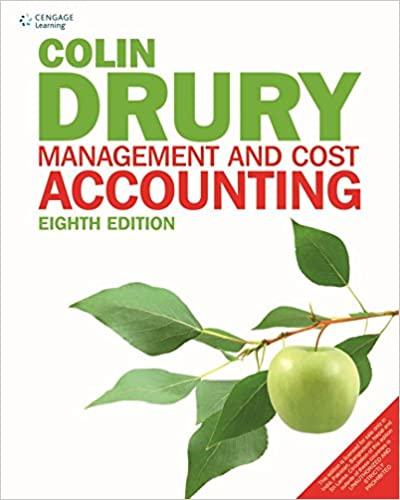Big Cheese Chairs (BCC) manufactures and sells executive leather chairs. They are considering a new design of
Question:
Big Cheese Chairs (BCC) manufactures and sells executive leather chairs. They are considering a new design of massaging chair to launch into the competitive market in which they operate.
They have carried out an investigation in the market and using a target costing system have targeted a competitive selling price of \($120\) for the chair. BCC wants a margin on selling price of 20 per cent (ignoring any overheads).
The frame and massage mechanism will be bought in for \($51\) per chair and BCC will upholster it in leather and assemble it ready for despatch.
Leather costs \($10\) per metre and two metres are needed for a complete chair although 20 per cent of all leather is wasted in the upholster process.
The upholstery and assembly process will be subject to a learning effect as the workers get used to the new design. BCC estimates that the first chair will take two hours to prepare but this will be subject to a learning rate (LR) of 95 per cent. The learning improvement will stop once 128 chairs have been made and the time for the 128th chair will be the time for all subsequent chairs.
The cost of labour is \($15\) per hour.
The learning formula is shown on the formula sheet and at the 95 per cent learning rate the value of b is –0.074000581.
Required:
(a) Calculate the average cost for the first 128 chairs made and identify any cost gap that may be present at that stage.
(b) Assuming that a cost gap for the chair exists suggest four ways in which it could be closed.
The production manager denies any claims that a cost gap exists and has stated that the cost of the 128th chair will be low enough to yield the required margin.
(c) Calculate the cost of the 128th chair made and state whether the target cost is being achieved on the 128th chair.
Step by Step Answer:






